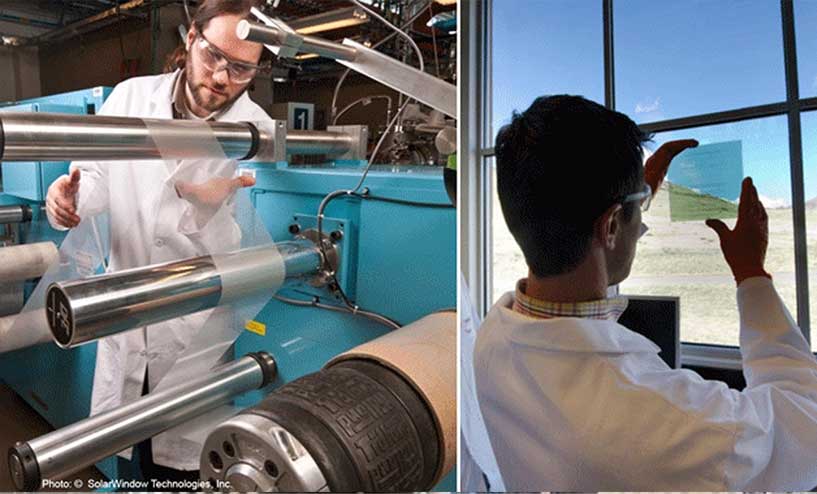A Columbia-based company has created an innovative solar technology, SolarWindow™, which may potentially turn ordinary window or entire tall towers and skyscrapers into electricity generators.
The novel technology consists of an ultra-thin layers of electricity-generating liquid coatings that can be applied to the interior of glass or plastic window units as well as on flexible plastics sheets.
The liquid coating is primarily made of polymers, carbon and hydrogen and, when applied as a film layer to windows, it converts sunlight and artificial light sources into electricity in the same way that plants do via photosynthesis. In fact, this technology is generically referred to as ‘organic photovoltaic solar’.

But, how does SolarWindow™ compare to today’s solar?
For years, technologists and scientists, from the U.S. and Great Britain, have been exploring new forms of solar technologies aimed to improve the conversion efficiency of solar cells, as conversion rates have traditionally been low. Typical silicon-based solar cells today, for instance, achieve between 20 and 25 percent energy efficiency, while emerging organic solar cells achieve only about half this amount, or 12 percent efficiency. To make these technologies beneficial on a commercial scale, conversion rates obviously need to be as high as possible.
SolarWindow Technologies announces that its new solar cells are able to produce 50 times the energy of conventional crystalline and thin-film PV technologies with a faster return on the investment compared to a typical solar array. Outcomes of the first financial modelling shows that the novel solar coating achieves payback within one year, producing the equivalent amount of power that would require conventional solar systems five to 11 years for payback.
Compared to conventional solar cells, SolarWindow™ offers other advantages such as:
- See-through, with high level of ‘visible light transmission.’ Traditional solar is not see-through.
- Able to generate significant electricity from natural, artificial or even shaded light.
- Materials needed for the new cells can be produced relatively quickly and inexpensively.
- Do not require silicon wafers, or amorphous silicon, copper-indium-gallium-selenide, cadmium telluride, and other expensive materials that often need high-vacuum and high-temperature production techniques.

SolarWindow Technologies announces that its new solar cells are able to produce 50 times the energy of conventional crystalline and thin-film PV technologies with a faster return on the investment compared to a typical solar array. Outcomes of the first financial modelling shows that the novel solar coating achieves payback within one year, producing the equivalent amount of power that would require conventional solar systems five to 11 years for payback.
Compared to conventional solar cells, SolarWindow™ offers other advantages such as:
- See-through, with high level of ‘visible light transmission.’ Traditional solar is not see-through.
- Able to generate significant electricity from natural, artificial or even shaded light.
- Materials needed for the new cells can be produced relatively quickly and inexpensively.
- Do not require silicon wafers, or amorphous silicon, copper-indium-gallium-selenide, cadmium telluride, and other expensive materials that often need high-vacuum and high-temperature production techniques.
,
Photo: SolarWindow™ is not currently under production. Roll-to-Roll process equipment is being evaluated for future SolarWindow™ product development (left); Researcher views Colorado Rocky Mountains through electricity-generating SolarWindow™ module (right)
SolarWindow Technology is not the only company which has come up with a new “organic-based” solar technology. A cohort of scientists of the Universities of Cambridge and Washington may have come up with a similar solution which may make organic solar technology extremely viable in the near future.
“These new cells can be printed like newspaper and manufactured into rolls of film like plastic wrap, so they could have a significant manufacturing cost advantage over traditional materials like silicon,” says David Ginger, a professor of chemistry at the University of Cambridge and co-author of a study on the technology recently published in the peer-reviewed journal, Nature.
While the above technologies are being independently validated and production processes are being evaluated, we are keeping our fingers crossed that the SolarWindow Technologies and University of Cambridge deliver on their promises and are looking forward to seeing the organic solar cells revolutionising the way we harvest solar energy.




